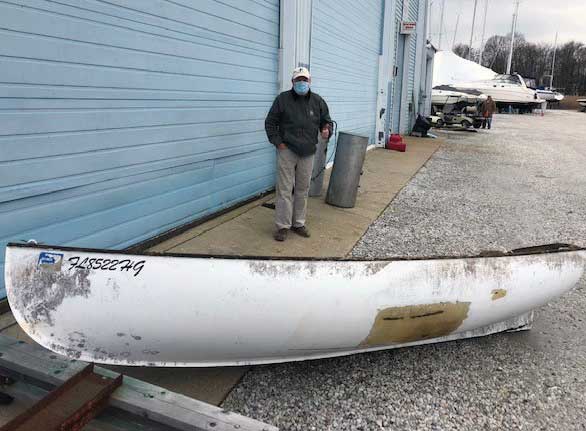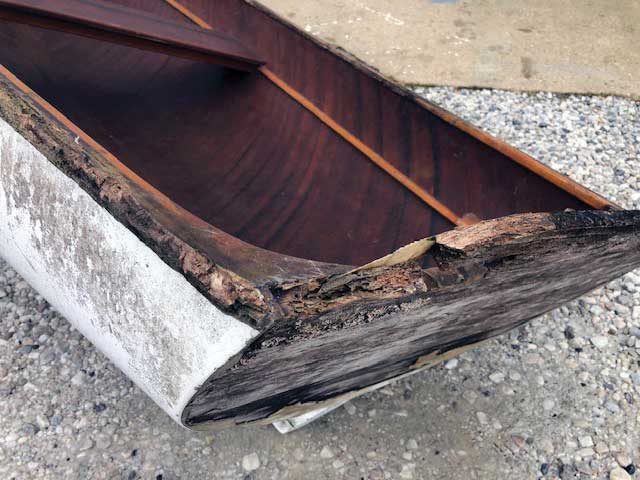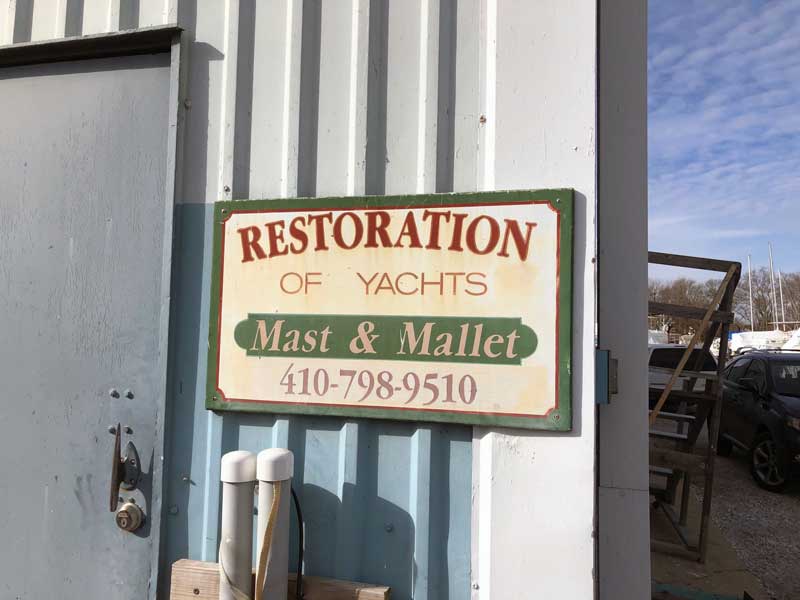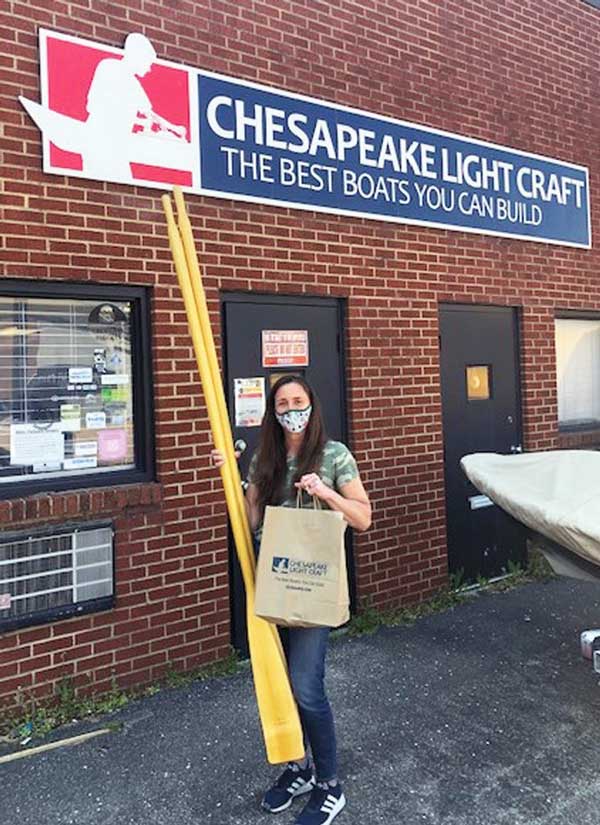This is the story of one man's desire to build or restore a wooden boat, and the resulting restoration of a cold molded rowing dinghy.

There is a line in a Janis Joplin song that goes: “Oh Lord won’t you buy me a Mercedes Benz? My friends all drive Porsches, I must make amends.” The song was Janis’s 1970 rendition of the common expression out of the 50s: “keeping up with the Joneses.”
So, is wanting what your neighbor has bad or good, productive or counterproductive, nouveau or old as time?
Actually, it goes way back. The language varies, but my Catholic school boy recollection of the Ten Commandments includes something like: “Thou shalt not covet thy neighbor’s goods.”
But covet I do, especially when it comes to the building of a small wooden boat. My friends have all built them. I am behind.
Sing it for me, Janis!
The truth is that many Bay region men of a “certain age” find the time to go to Wooden Boat School perhaps work with Chesapeake Light Craft to build a small rowing or sailing vessel with their own hands. Not me. I never had time.
One friend, let’s call him Eric, went to school twice! He built the ever so simple stitch-and-glue kayak and an excellent nutshell pram. Jealous.

Another friend, let’s call him AJ, never went to boatbuilding school. He was home schooled, reading and learning on his own. He recently built a fine example of an Acorn 12, a lapstrake rowing and sailing dinghy. More jealous.
Then there is Hank, maybe his real name. He was so enamored with cold molded building techniques that he started a little company and actually built and sold a wooden boat he built with his own hands. My coveting of their experience was reaching a feverish peak.
The final straw was a friend who lives in Florida, call him Dave. He built not one, but two beautifully varnished strip-built works of art in his garage over the last year. He explained that he needed a pandemic project. My hands were starting to shake.
Then, it happened. One of my brothers came into possession of a beat up cold-molded rowing dinghy of about 11 feet and of unknown and perhaps dubious heritage. It had some rot in the transom and rub rails and a bad patch job in the otherwise still pristine cold-molded hull. It was missing one of its three seats. He offered it to me, lest it just complete its slow deterioration in his side yard. I jumped at the opportunity.

My brainstorm: I could restore this troubled little vessel to her original glory and consider myself caught up. Think of it like Janis getting a vintage Mercedes that needed a little work.
Without deeper thinking (like so many emotional boat decisions) I was off in my pickup truck to collect my prize to be. This involved a drive to Florida, where my brother lives. Fortunately, the 11-foot dinghy fit nicely between the pickup bed wheel wells; a perfect four feet wide. So, it stuck out the back a little...
Once I got my prize home, reality began to settle in. Taking stock of my woodworking experience and collection of tools, I had to acknowledge that my “portfolio” was best suited to building a shed, not a boat. And, by the way, I had no shed or garage capable of accommodating the project.
Winter was on the way, and I wanted to do the work over the winter and be on the Bay the following summer. Time for plan B, some professional help.

Yes, I took a short cut, restoring this small wooden boat with the help of a pro. Cheating, yes, but that won’t matter as I ply the Bay’s waters on a handsome wooden craft that I had a hand in, even if that hand was not covered in wood shavings and sawdust.
Joe Reid of Mast and Mallet Boatworks was my choice of pros. Joe is one of the Bay’s boatbuilding and restoring masters. His builds include the cold-molded Thomas Point line of downeast powerboats. His skills in wood bring him an assortment of pre-fiberglass boats to restore. Surely, I thought, Joe would understand my desire to bring this little rowing dinghy back to her prime.
On a cold and overcast day just before Christmas, I loaded my prize once again into the pickup and delivered her to Joe’s shop on the South River. We talked about the scope of the work. I took some pictures to document the “before” condition. Then, I was off, knowing she was in good hands.
As the winter progressed, Joe sent progress photos. He called occasionally with questions, and I scheduled occasional visits to see the progress firsthand.

The restoration steps can best be described as “out with the old and in with the new.” Joe inspected and removed all the rotted wood. This included part of the keel, most of the rub rail, and the upper half of the transom. He then rebuilt the boat adding newly crafted and perfectly matching wood in place of the discarded parts. He also found matching wood and replaced the missing third seat.
On an early spring day, I visited Joe at the shop. He was at a point of being done with the replacements and preparing for the paint and varnish that would make her shine. Joe needed new oar locks and it was time for oars as well. Happy to have a small task, I hurried over to Chesapeake Light Craft. Sales manager Nicky found the proper brass oar lock sets and brought me the spoon bladed oars I had so diligently researched online.
In late April, Joe finished the final cosmetics of the rehab project. The resulting craft is something to behold. She is not perfect, owing to the hard life already experienced. She is however handsome, like an aging movie star with the roughhewn face and all-knowing smile.

I can’t wait to row her away from the dock for the first time, probably about the time you are reading this story. I’ll be the guy in the pretty rowboat with the mile-wide smile.
And let’s fess up. I am not the only boater spending thousands on something worth hundreds. I am far from alone. You may find yourself in this story. I certainly hope so.
Thanks, Janis!
By Mike Pitchford